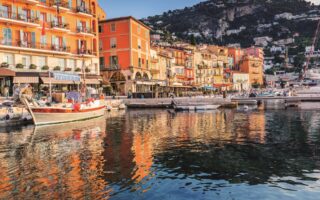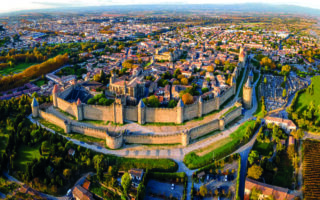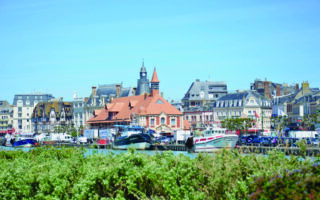Property Guide: Vaunage
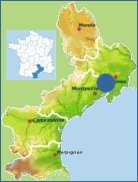

Provence in the Languedoc, South of France!
The Vaunage is a specific area of the Gard department, west of Nimes which offers buyers the rural idyll of charming stone houses set in small provencal villages where the pace of life is slow. It is authentic Provence in the Languedoc.
La Vaunage is an attractive area west of Nimes, South of France, that the initiated buyer already knows well. However, to those of us who are uninitiated, it is perhaps necessary to understand a little of Vaunage history to gain a sense and feel of the area’s character and what is has to offer to buyers. And if you are thinking of buying in the Gard or Herault region it would pay to know this particular region a little before buying.
The Vaunage is an area which is perhaps set apart in historical and social terms from its neighbour the Camargue in the south east. Unlike the Camargue, the Vaunage was a protestant area made up of small stone farms run by independent and self reliant farmers. Neighbouring Camargue was made up of large farms where 200 or more workers would travail for their daily living. It was Catholic, and the culture there was more clearly that of a social divide between master or landowner and worker. There the country is flat, and there bulls, sheep, and rice were cultivated.
By contrast the Vaunage was a place of gentle rolling hills, vineyards, olive groves, orchards and cereal fields and small stone villages of between 1,500 – 3,500 inhabitants each. Each household owned its own piece of land and each man tended to work for himself.
Typically in France, the local traditions of the past are preserved and held dear, and today the Vaunage retains much the same feel it has always had. The emphasis remains on having a good quality of life and one observes architecture that is well preserved, stone buildings set in small provencal style villages. Many local traditions are also still preserved such as the abrivado and bandido bull-running events; and the local population are justly proud of their ancient relics and monuments such as the Roman Opodium des Castels at Nages.
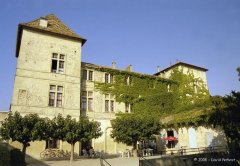
the Chateau de Caveirac

pretty tree-lined avenue
Culturally this region claims to be part of “Provence” as much if not more so than “Languedoc”, a claim which is recognised by such organs as the Michelin Guide to France. Geographically the area runs from Nimes westward, and includes villages like Caveirac, Calvisson, Langlade, Calvisson, Congenies, St Dionizy, Clarensac, St Come and Boissieres. Though not officially part of the Vaunage, its neighbouring villages of Aujargues, Junas, Aigues Vives, Aubais and the small town of Sommieres are equally pretty. The Vaunage stops at the A9 which runs between Nimes and Montpellier. Once you get beyond these regions the type of housing and landscape changes.
Perhaps because of its proximity to the large cities of Nimes at Montpellier, the local population is an eclectic mix of young upwardly mobile families, retirees, second home owners as well as local farmers and those who commute into the cities for work. The variety of people and ages means that many of the villages offer diverse clubs, sports and activities – including an impressive yoga network that is not often seen in rural areas. There are nine primary schools and two secondary colleges in the Vaunage, and lycees in nearby Milhaud, Lunel and several more in Nimes.
This area is well located, with access to the beach in 20 minutes by car, less than an hour’s drive to the hills and mountains of the Cevennes, and proximity to city life. Both Nimes and Montpellier are only 30 minute, both with airports serving international routes, and a TGV route from the north connecting Nimes and Paris.
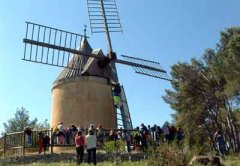
the Moulin de Langlade
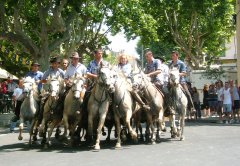
traditions like the abrivado are preserved too
Thanks to its excellent location and picture perfect prettiness, the Vaunage is already avery popular area and property prices reflect this. If you want to buy here you will need to be realistic. Following house price inflation in this region prices have risen by as much as 70% over the last six years. However, for what it offers, it is still better value and less expensive than other areas along the French Riviera and in Provence. It also benefits from being much less crowded than those regions.
If you had a budget of around €100,000 you would be hard pushed to buy anything more than a set of stone walls that you could call your own. These low budget renovations are increasingly hard to come by and they tend to sell quickly. Between €100,000 – 250,000, the majority of available property is likely to be small village houses (1 or 2 bed maximum) or newly developed studio or one-bed apartments.
Realistically, you will need a budget of over €250,000 to buy a reasonable family home, with 3 bedrooms and some outside space. However, if you do have a budget of €300 – 500,000 then this region has lots to offer. One can buy some beautiful stone houses or villas with 4 bedrooms, swimming pools and gardens set in very attractive areas. Character houses which have been fully restored tend to be more expensive, whilst more recently built villas may not be quite the French rural idyll but can be better value as they often have larger gardens and pools. There are also some truly stunning large (5+ beds) mas or maison de maitre which cost upwards of €500,000.
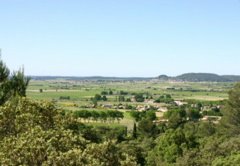
view of the Vaunage and Calvisson
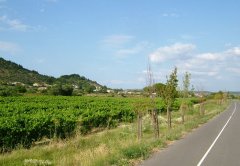
vineyards in the Vaunage
As an opportunity for longer term investment, this is an area that is unlikely to drop in value in the longer term. In fact, owing to its appeal to foreign buyers, and its location, it is likely to see further capital growth in the longer term. But don’t be put off trying to get a lower price by bargaining hard in the meantime!
If you are interested in a charming village in the South of France, in a warm Mediterranean climate, which retains its Provencal feel, then the Vaunage is worth paying a visit!
Greca Sandford
• image of Chateau de Caveirac copyright David Perbost
Share to: Facebook Twitter LinkedIn Email
More in activity, beach, chateau, guides, schools, villages
By FrenchEntrée
Leave a reply
Your email address will not be published. Required fields are marked *

